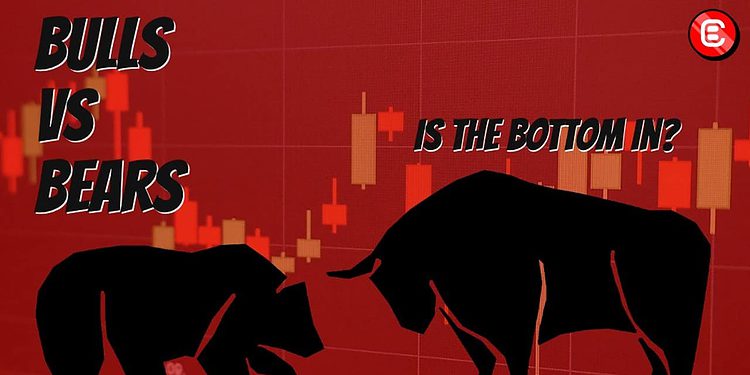Article contributed by Tin Money. Follow them on Medium here.
Image: PixTeller
The Crypto Macro Environment
A technical indicator called the “Pi Cycle” has been making the rounds lately. You can find it on Trading View. It is a collection of high time-frame simple and exponential moving averages (MA & EMA respectively).
As the theory goes, when the two shorter time-frame MA and EMA lines cross the really long MA, this indicates “the bottom”. The Pi Cycle indicator (apparently) correctly identified “the bottom” in 2015 and 2018.
What drove it to the collective CT consciousness was the fact that it just crossed again. Thus, if the indicator can be trusted, we have indeed found “the bottom”.
Image: TradingView
It’s a cute theory. As I mentioned, the Pi Cycle cross appears to have correctly identified the 2015 and 2018 price bottom for Bitcoin.
There’s just one little problem.
Covid Stimulus
The issue with the Pi Cycle indicator is it relies on moving averages. The trouble with relying on moving averages, especially long time-frame ones (like the popular 200MA / 200EMA) is the Covid pump.
Two things happened almost simultaneously when the Covid lock-downs first started rolling out in the United States:
Interest rates went to zero; and
The Fed went on a MASSIVE inflationary money printing spree.
This is what that looks like. The first chart is the M1 money supply (blue line) and BTC price (orange line) going back before the 2008 crash up to just before the 2020 Covid stimulus.
Image: TradingView
As you can see, the M1 money supply was basically a flat-line heading into the 2008 crash. Then you see a rapid rise in the M1. BTC prices are linear here, which will become important in a moment.
With that chart in mind, here is what happened after the 2020 Covid stimulus:
Image: TradingView
See any difference?
If you want to get super technical about it, this is just a correlation. Meaning, just because the M1 money supply went up almost exactly as much as Bitcoin doesn’t mean it caused BTC price to go up.
If you have a better theory or explanation, I’m all ears.
As I mentioned above, the BTC visual price examples I’m using here are expressed linearly. The trouble is, BTC prices have experienced massive “bull runs” during the times I’ve shown.
And when you’re looking linearly it skews everything. But if you zoom in, you can see how BTC prices have moved in relation to the M1 a little clearer.
BTC vs the M1 Money Supply
These charts are similar to the others, but on shorter time-frames. The M1 is still the blue line, and BTC is the orange.
BTC/M1 2008–2012
Image: TradingView
Apart from some “irrational exuberance” as people started FOMOing, you can see the rough growth rate of BTC is under, but pretty much mirrors the growth in the M1.
BTC/M1 2012–2017
Image: TradingView
What we can see here is price “overshoots” to the upside (more irrational exuberance?) and then over-corrects in 2015. But the average price trend (again) generally follows under the M1.
Part of the “over-correction” is likely related to the fact that the Fed started raising interest rates for the first time near the 2015 “bottom”.
BTC/M1 2017–2020
Image: TradingView
Much like the previous charts, BTC price is generally under the M1. This is also the first time BTC has experienced a macro environment where the Fed is raising interest rates.
The BTC price “bottom” also coincides with the Fed publicly stating there would be no more interest rate hikes. For context, from 2015 to 2018, the Fed raised rates from effectively zero to 2.5%.
The Fed tried to do “quantitative tightening” during this period, but had to abandon that as credit and debt markets started seizing up in 2017/2018.
BTC/M1 2020-Present
Image: TradingView
Aside from some “irrational exuberance” that took BTC to $65k, you can see BTC prices are again generally under M1 inflation, but otherwise roughly track the rise. Interest rates were also dropped back to effectively zero when the Covid lock-downs started.
The Trouble with Averages
Getting back to the start of this article, let’s return to an earlier chart. This is the chart comparing BTC price and the M1 money supply from 2012 to the present.
Image: TradingView
The question you need to ask yourself as an investor is: how much does the Covid stimulus pump skew the Pi Cycle averages? From my perspective, the 2021 pump was a gross aberration.
And as a gross aberration, I think the averages that the “Pi Cycle” indicator relies on are grossly skewed high. Meaning the supposedly predictive “cross” is likely far too early to be accurate.
Here’s a baseball analogy. Fed money printing after the 2008 Collapse was like giving a hitter steroids. Fed money printing after Covid 2020 was like giving the hitter steroids, an oversize bat, and replacing baseballs with softballs.
Thing is, if you give baseball players steroids and the averages come way up, they’re still playing the same basic game. But when you give them steroids, oversize bats and start using softballs instead of baseballs, you’ve fundamentally changed the game.
And that’s exactly what the Fed did with Covid stimulus. They fundamentally changed the game.
Now the Fed is trying to go back to the old rules. But just like the baseball players from the analogy, they’re playing a different game now.
And they’ve been playing this way for so long, there aren’t any players left that can play without the extra help. Meaning, oversize bats and softballs are likely to stay.
The Fed just hasn’t realised (admitted?) it yet.
Calling the bottom
The 2018 crypto crash is the closest analog to the 2022 crash we have. The Fed was raising interest rates and threatening to do quantitative tightening (QT) in 2018.
Today the Fed is raising interest rates and threatening to do QT again. Except this time, they have a multi-trillion dollar, direct-to-consumer stimulus hole to plug.
And just like 2018, after markets tanked from the $20k highs down to the $6k local bottom, the “experts” started reaching a consensus. Here is a quote from back then:
Bitcoin’s long-tailed monthly candle indicates the long-term bear market likely bottomed out around $6,000 — Coindesk, 31 August 2018
And this one:
Michael Novogratz, the founder of the cryptocurrency asset management firm Galaxy Digital, believes the market has hit a bottom [at $6k] — Coindesk, 21 September 2018
Here’s another:
Bitcoin ended October on a weak note, confirming its first three-month losing streak since 2015, but things may be looking up for November…Bitcoin may see a rise in November if seasonal patterns repeat — Coindesk, 1 November 2018
In case you forgot, Bitcoin dropped 48% from the $6k “bottom” exactly 10-days after that last quote was published. Bitcoin actually “bottomed” at around $3.2k, which was the last true “support” prior to the 2018 run to $20k.
Price action is 2018 is important, because that was the closest macro environment we have to compare with today. Aside from today, 2018 was the only other time in Bitcoin’s history where the Fed was raising interest rates and threatening QT.
And back then, Bitcoin prices absolutely pooped the bed when the Fed raised rates to 2.5%, which is basically what we can expect to happen next week.
The 2.5% interest rate hike was also: the exact bottom of the Bitcoin price decline in 2018 AND the exact same time the Fed promised to stop raising rates.
Just sayin’.
Conclusion
Calling the bottom is a fool’s errand. This is especially true today because of the massive market distortion created by the Covid stimulus.
As I mentioned a couple weeks ago, I have started to DCA into a few projects, and most of that is going to BTC. But I’m also still heavily in stablecoins.
I remain confident more downside risk remains in the markets. I acknowledge I might miss out on a “relief” rally or small pumps in price here or there.
But I have very little concern I’m going to miss the “real” recovery. If 2018 was any indicator, even if prices truly have “bottomed”, they basically ranged sideways for months after. I imagine the same will happen this time around as well.
And given the macro outlook today, my overall thesis is prices will likely drop another 30–40% in the next few weeks. I’ve already got buy orders waiting for that scenario.
I’ll keep DCA’ing in the meantime and maybe take a few trades here and there. Sooner or later I know the Fed has to pivot.
It’s as inevitable as the sun rising in the east. And when those oversize bats and softballs come out, I’ll call the bottom. Could I be wrong? Of course.
I’m not an “expert”.
Remember, these are just my opinions. I’m not a financial advisor, this isn’t financial advice, and always DYOR. Following any of these ideas might cause you to lose all of your money. I am 100% serious about that. I like tinkering with this stuff, but I’m on record acting like a total baboon. Invest accordingly.
Until next time, be safe, be smart and be sure to tie the camel.







